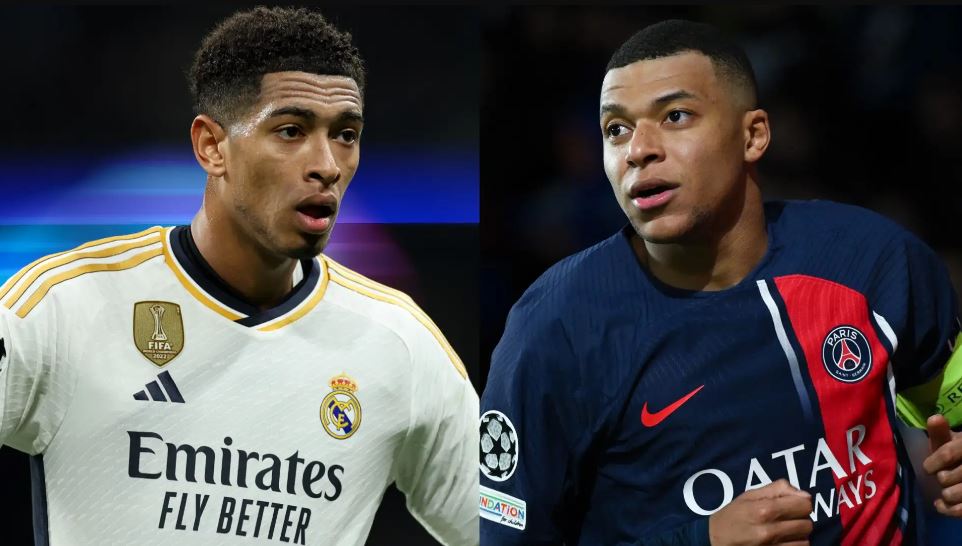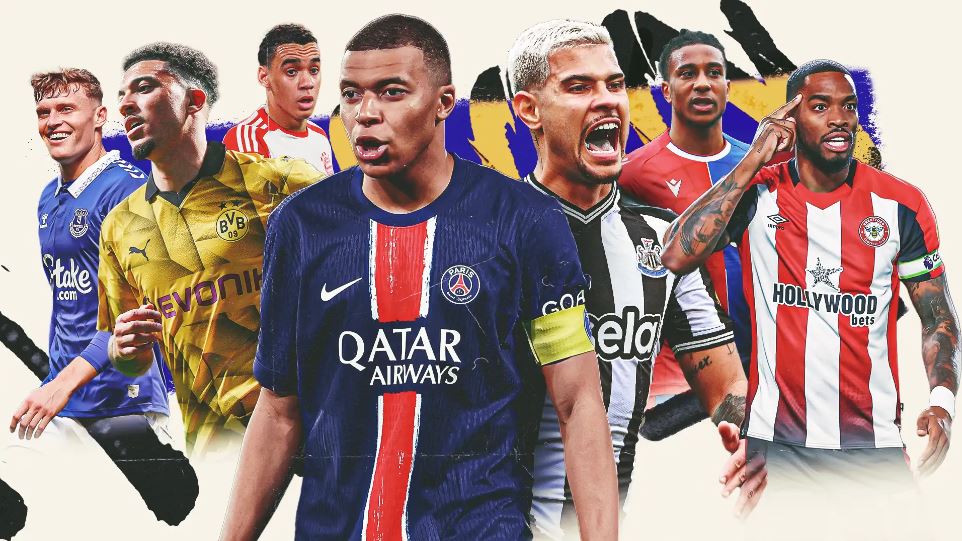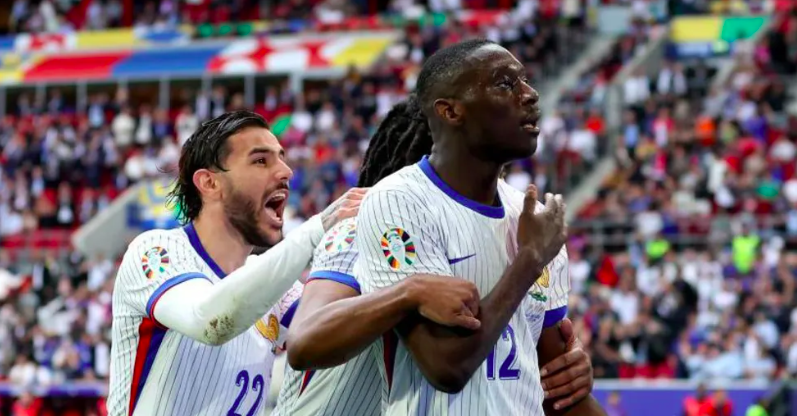How Big Transfers Are Turning Football Into a Billionaire’s Playground
Football has always been more than just a game. It’s a global spectacle, a cultural phenomenon, and increasingly, a financial juggernaut. In 2024, the world of football witnessed some of the most staggering big transfers ever seen. These colossal deals, involving eye-watering sums of money, are not just changing the fortunes of individual clubs but are also redefining the landscape of the sport. But how exactly are these big transfers shaping the future of football? Let’s dive into the drama, the economics, and the players who have become symbols of this new era.
From Millions to Billions: The Big Transfers Transforming Football

The Rise of Big Transfers: A Billion-Euro Game
To understand the impact of big transfers, we need to start by looking at some of the most significant deals in recent memory. The summer of 2024 has been a blockbuster, with clubs breaking the bank to secure top talent. Take Kylian Mbappé, for instance. His €200 million move to Real Madrid has not only smashed records but also sent shockwaves through the football world. Mbappé, who has been touted as the heir to Cristiano Ronaldo and Lionel Messi, now carries the weight of an entire club’s ambitions on his shoulders. Learn more about Mbappé’s transfer.
Similarly, Manchester United’s acquisition of Jude Bellingham for €150 million has redefined the club’s midfield and marked the Red Devils’ intent to reclaim their place at the top of English football. Bellingham, at just 21 years old, is already being hailed as a generational talent, and his big transfer to Old Trafford is a statement of intent from a club that has been seeking to return to its former glory. Read about Bellingham’s impact at United.
But it’s not just the players who are benefiting from these big transfers. Clubs like Manchester City and Paris Saint-Germain are using their financial muscle to build squads that are not just competitive but dominant. Erling Haaland’s move to Manchester City for €120 million in 2022 was a game-changer, and his impact on the Premier League has been nothing short of phenomenal. Haaland’s goals have powered City to multiple titles, and his presence in the team has made them the favorites in every competition they enter. Explore Haaland’s success at City.
The Economics Behind Big Transfers: More Than Just Money
Big transfers are not just about the transfer fees—although those numbers are often mind-boggling. The financial implications of these deals go far beyond the initial cost. For clubs, signing a marquee player is as much about branding and revenue generation as it is about improving the squad. When Real Madrid signed Mbappé, they weren’t just getting a world-class player; they were securing a marketing juggernaut. Mbappé’s image will sell shirts, attract sponsors, and bring in fans from all over the world.
Manchester United’s acquisition of Bellingham is another example of a transfer that goes beyond the pitch. Bellingham’s young age and English heritage make him the perfect ambassador for the club, appealing to both local fans and the broader global market. His signing is expected to boost United’s commercial revenue, with new sponsorship deals and increased merchandise sales already in the works.
In the digital age, clubs are also leveraging their big-name signings to enhance their online presence. Social media followings, digital content, and even ventures into the world of NFTs (non-fungible tokens) are becoming increasingly important revenue streams for top clubs. When a player like Mbappé or Bellingham joins a club, it’s not just the fans in the stadium who take notice—it’s millions of followers across the globe, all of whom are potential customers. Learn how digital age impacts transfers.
Competitive Balance: The Double-Edged Sword of Big Transfers
While big transfers can propel clubs to new heights, they also have the potential to disrupt the competitive balance within leagues. The financial powerhouses of football—think Manchester City, Paris Saint-Germain, and Chelsea—have the resources to buy the best players, leaving other clubs struggling to keep up. This was evident in 2024 when clubs like Arsenal and Liverpool found themselves priced out of moves for top targets, forced to look for bargains in a market dominated by the super-rich.
The disparity in spending power has led to concerns that football is becoming too predictable. When the same few clubs are able to sign the biggest names every year, the excitement of the competition can start to wane. However, football has a way of surprising us. Even with the financial dominance of certain clubs, there are always underdog stories—clubs that defy the odds to compete at the highest level. Leicester City’s 2016 Premier League title win remains a powerful reminder that money isn’t everything in football.
Moreover, the Financial Fair Play (FFP) regulations, designed to prevent clubs from spending beyond their means, are becoming increasingly important. In 2024, UEFA tightened these regulations, aiming to level the playing field and ensure that clubs can only spend what they earn. However, the effectiveness of these rules remains a topic of debate, especially as the wealthiest clubs continue to find ways to work within—or around—them. Explore FFP regulations.
Inside the Mega Deals: How Big Transfers Are Dominating Football's Future

Globalization: The World at Their Feet
Big transfers are not just transforming football in Europe—they’re reshaping the sport on a global scale. The rise of social media, streaming services, and international tours means that top clubs now have fans in every corner of the globe. When a player like Mbappé or Haaland moves to a new club, it’s not just local fans who celebrate—it’s millions of people worldwide.
This globalization of football is both a blessing and a curse. On the one hand, it allows clubs to reach new markets and grow their fanbase exponentially. On the other hand, it can create a disconnect between clubs and their local communities, as the focus shifts to global rather than local engagement.
However, for the financial powerhouses, the benefits of globalization far outweigh the downsides. Clubs like Manchester United, Real Madrid, and Paris Saint-Germain are now as much brands as they are football teams. They are carefully managed global enterprises, with strategies designed to maximize their appeal in key markets like Asia, North America, and the Middle East. Discover how football is going global.
The Future of Big Transfers: What’s Next?
As we look to the future, it’s clear that big transfers will continue to play a pivotal role in shaping football. However, the market may evolve in response to the changing landscape. The 2024 transfer window has shown us that clubs are willing to spend vast sums to secure top talent, but there are also signs that the era of unchecked spending may be coming to an end.
With the introduction of stricter FFP regulations, clubs will need to be more strategic in their spending. We may see an increase in player exchanges, performance-based deals, and strategic loans as clubs look to build competitive squads without breaching financial rules. Additionally, the rise of new markets, particularly in Asia and North America, could lead to more big transfers involving players from these regions, as clubs look to tap into these lucrative fanbases.
Moreover, the role of agents and intermediaries in big transfers is likely to come under greater scrutiny. The influence of agents in driving up transfer fees and wages has been a contentious issue for years, and with the sums involved in big transfers continuing to rise, there may be calls for greater transparency and regulation.
Conclusion: The Ever-Evolving Drama of Big Transfers
In conclusion, big transfers are more than just headline-grabbing deals—they are the lifeblood of modern football, shaping the sport’s future in ways we are only beginning to understand. As financial powerhouses continue to push the boundaries of what is possible, the landscape of football is being transformed before our eyes. Whether it’s the economic strategies behind these deals, the impact on competitive balance, or the globalization of the sport, big transfers are at the heart of football’s evolution.
As fans, we are living in an era of unprecedented excitement and change. The drama of big transfers will continue to captivate us, as clubs vie for supremacy both on and off the pitch. The question is not whether big transfers will continue to shape football, but how—and what the sport will look like in the years to come. One thing is for certain: the beautiful game will never be the same again, and we are all witnesses to its incredible transformation. Follow us for more on Fantic Sports


